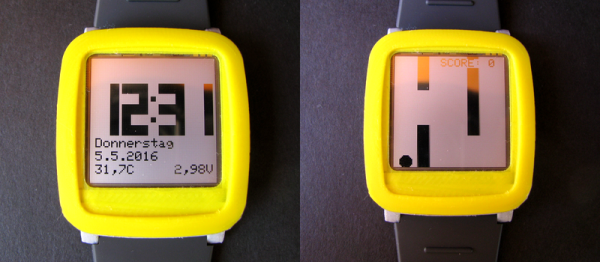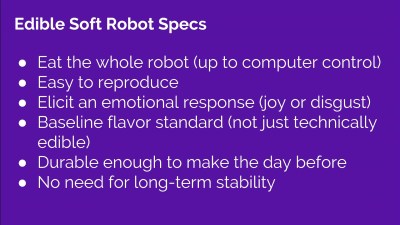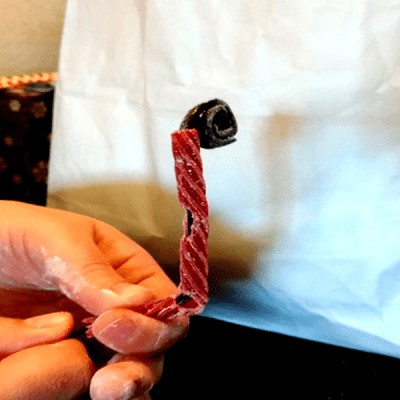[Max K] has been testing the battery life of his self-designed watch under real-world conditions. Six months later, the nominally 3 V, 160 mAh CR2025 cell is reading 2.85 V, so the end is near, but that’s quite a feat for a home-engineered smart watch.
We’ve tipped our hats to the Chronio before in this Hacklet, but now that the code is available, as well as the sweet 3D-printed case files, it’s time to make your own. Why? It looks sweet, it plays a limited version of Flappy Bird (embedded below), and six month’s on a button cell is a pretty great accomplishment, considering that it’s driving a 96×96 pixel LCD display.
The Chronio is more than inspired by the Pebble watch — he based his 3D model directly on theirs — so that’s bound to draw comparisons. The Pebble is color, and has Bluetooth and everything else under the sun. But after a few weeks away from a power socket, ask a Pebble wearer what time it is. Bazinga!









 But more than that, she demonstrated all of the materials she’s looked at so far, and the research she’s done. To some extent, the process is the substance of this project, but there’s nothing wrong with some tasty revelations along the way.
But more than that, she demonstrated all of the materials she’s looked at so far, and the research she’s done. To some extent, the process is the substance of this project, but there’s nothing wrong with some tasty revelations along the way.









